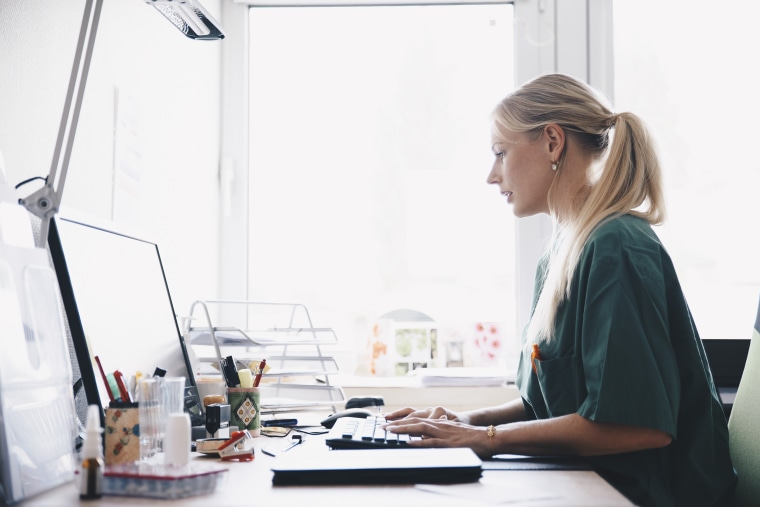We’ve heard all about sitting being the new smoking. On average, people spend 70 percent of their waking hours sitting, according to research. And among the laundry list of health issues caused by prolonged sitting is tight hips.
Research shows that musculoskeletal complaints are among the most prevalent symptoms in the general population — and according to one study, about 15 percent of older adults complain of significant hip pain on most days.
This may not immediately strike you as a huge concern, but having tight hips may actually be the underlying cause of seemingly unrelated chronic pain or discomfort.
According to Danny Johnson, corrective exercise specialist and owner of a personal training and rehabilitation center in London, every joint in the body needs a good muscle balance surrounding it in order to function optimally. “Tight hip flexors and tight hamstrings can bring the hips into an anterior pelvic tilt and cause back pain, putting pressure on and compressing the lumbar spine discs,” he says. This explains why tight hips and the area around the hips can pull the low spine out of alignment. “It will also tighten up the lumbar [muscles] and can provoke spasms in the back as these muscles will try to constantly stabilize and will fatigue,” Johnson says.
In addition to back issues, Johnson says that hip tightness is often accompanied by tight inner thighs and weak outer thighs, which can bring the knees inward provoking medial knee pain and affecting gate. If you notice knee pain specifically in the inside of the knees (closer to the middle of the body as opposed to the outer knee), this may be a sign that you have tight hips. Furthermore, tight glutes (also caused by sitting all day) can contribute to reduced hip rotation. “This decreases mobility of the hips and therefore forces other muscles down the chain to overwork (adductors, IT band, foot muscles, etc.),” Johnson explains.
Knowing some of the consequences of tight hips, it’s not hard to see why loosening them up is so important! Especially if you are spending long stretches of time sitting.
5 stretches for tight hips
Desk warrior, this is for you: This five-move sequence will help mobilize your hips and loosen tight muscles that can lead to back, knee and foot pain. You don’t need fancy equipment or a gym to do these. (You don’t even need to get out of your chair to perform most of them!)
Hip Flexor Warrior 1 Stretch
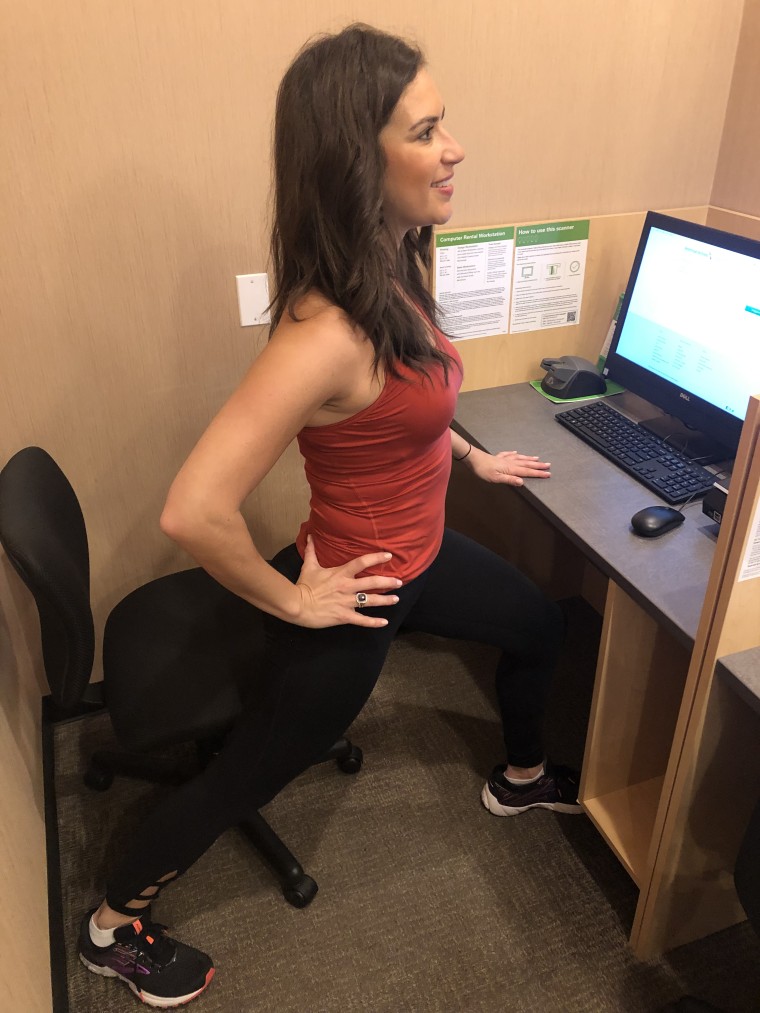
Stand up from your chair and step your right foot forward and your left foot back. Open the feet wider than the hips, and bend the front knee while keeping the back leg straight. Turn the left toes so they face forward on a 45-degree angle. Place your hands on your hips, on your desk for balance or reach them towards the sky. Pull the abs in and relax the shoulders. Hold for 20–30 seconds, and then switch to perform on the other side.
Forward Fold Hamstring Stretch
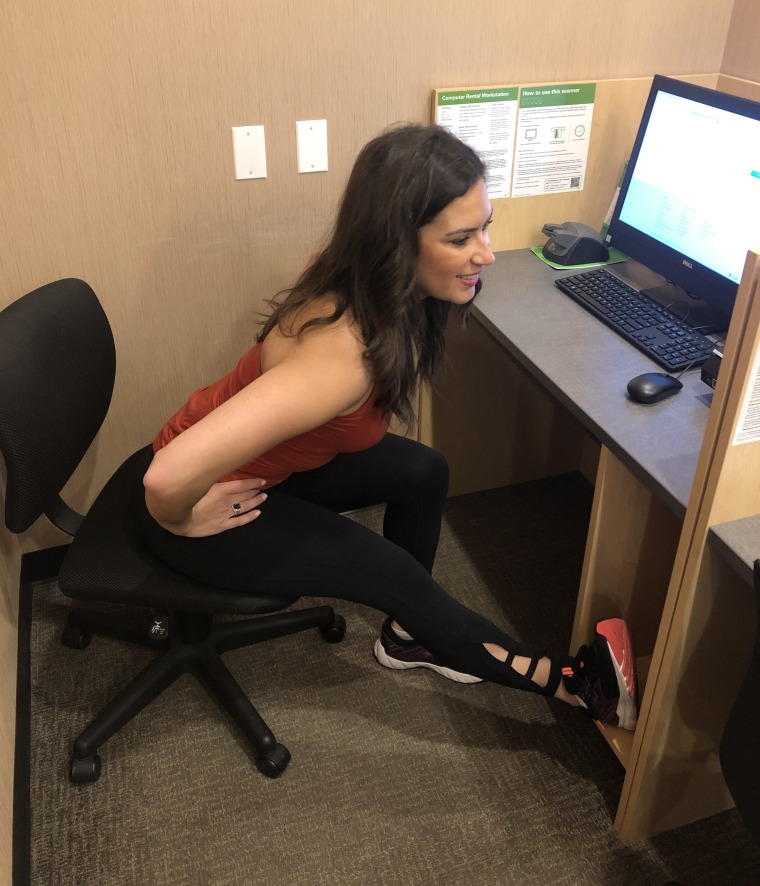
A standard forward fold (often performed in yoga) loosens up the back of the legs and the low back. While you’re seated at your desk, you can perform a similar pose by placing your heel up on a printer, boxes or shelves. Pull your naval in towards your spine, and then fold forward hinging at your hips. You can reach over towards the right toes and then over towards the left to stretch each leg on its own respectively, or you can reach forward towards both feet at the same time and stretch both legs together. Hold for 20-30 seconds while breathing slowly.
Modified Revolving Triangle IT Band Stretch
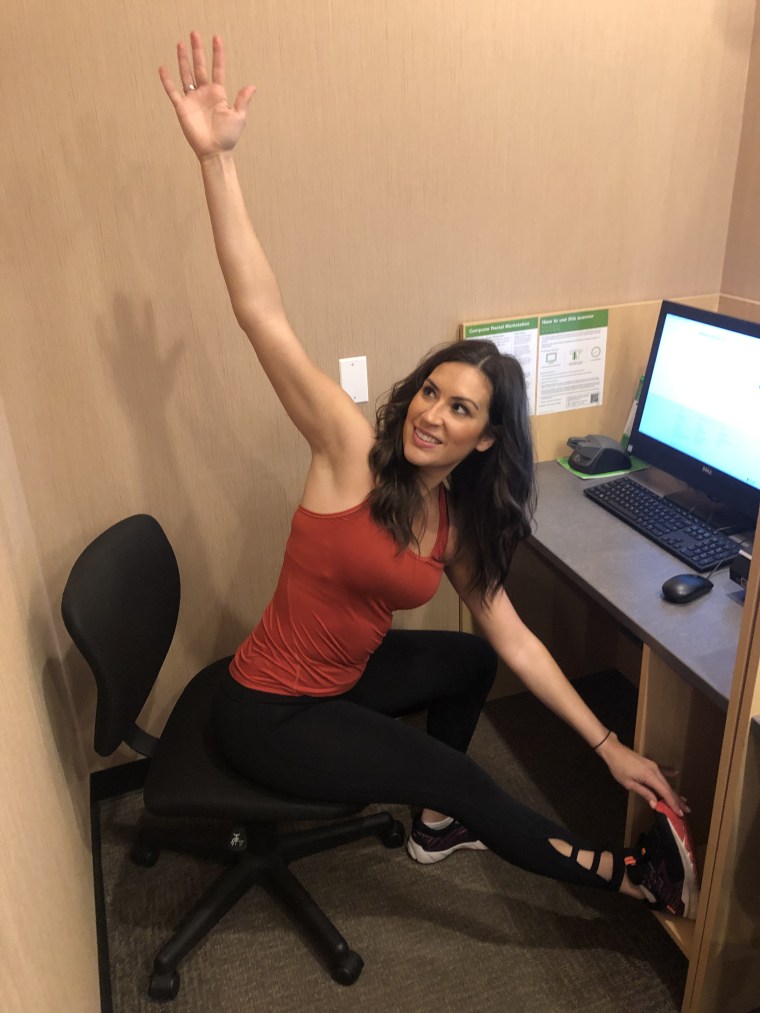
For this pose, straighten one leg out in front of you and keep the other leg bent with the foot on the ground. Flex the foot of the straightened leg and squeeze the quad. If you have the right leg straight, fold forward and reach the left hand towards the right shin. Then, twist to the right and reach the right arm up towards the ceiling. This should create a stretching sensation along the right outer thigh and IT band. (In yoga, this would be revolving triangle pose in a standing position. But at your desk, you’ll feel a similar sensation while sitting.) Hold for 20-30 seconds, then switch sides.
Modified Seated Pigeon Stretch
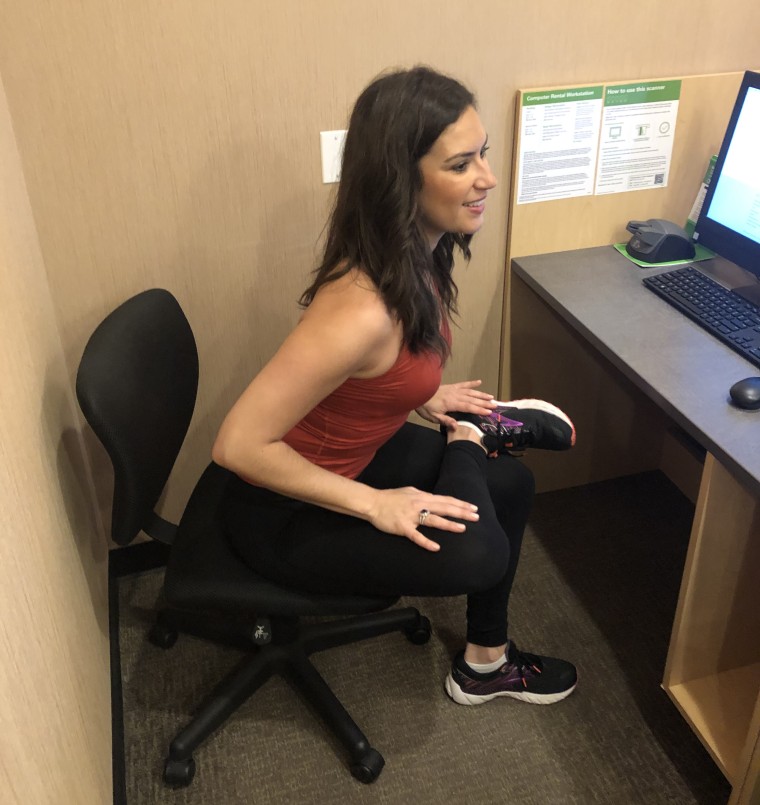
A popular hip stretch for runners, the pigeon pose can also be done seated at your desk. Sitting upright in your chair, cross your right ankle over your left knee. Flex your right foot, and feel a stretch in your right glute and outer hip. If you don’t feel a stretch, slowly hinge forward at your waist and lean into the right hip. Hold for 20-30 seconds, then switch sides.
Modified Wide-Legged Seated Forward Bend
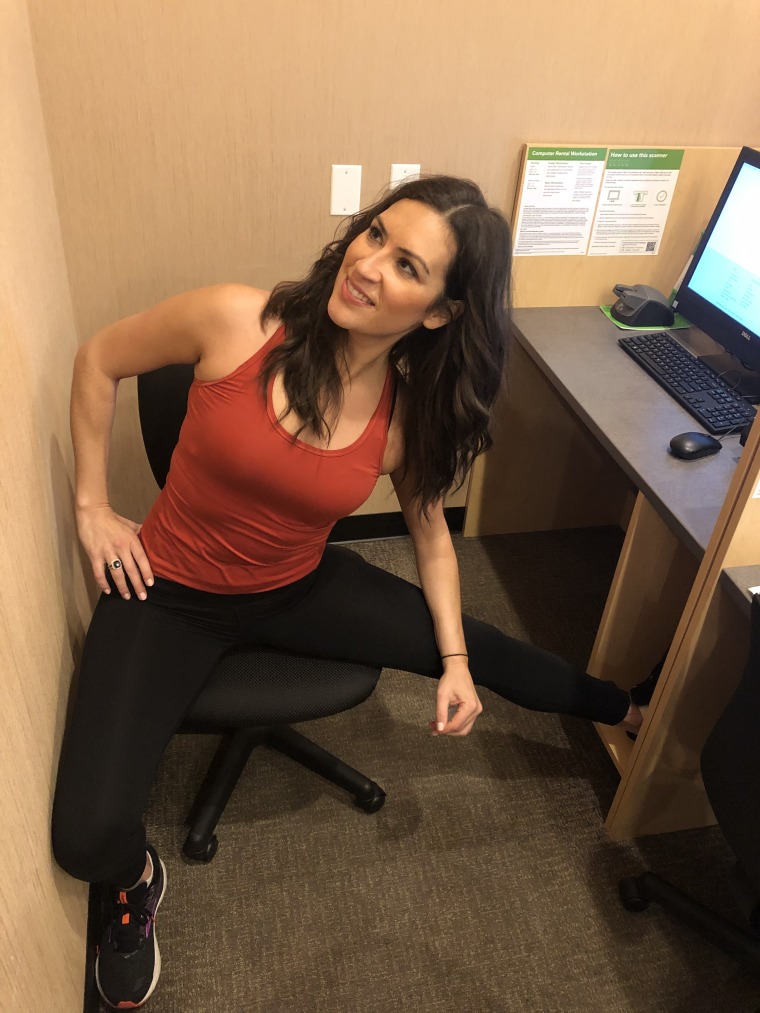
While sitting, turn the chair so that you can place your right heel onto boxes or a shelf (or something elevated). The goal is to stretch the inner right thigh. You can lean forward slowly to feel a more intense sensation in the inner thigh, otherwise called the adductors. Hold for 20-30 seconds, then switch sides.
TRY THESE FITNESS ROUTINES
- Back to basics: Your one-month treadmill workout
- A one-month resistance band workout you can do anywhere
- A 30-day strength training routine — no equipment required
- A 15-minute full body HIIT workout — no equipment required
- 5 complex exercises that will give you a full-body workout
Want more tips like these? NBC News BETTER is obsessed with finding easier, healthier and smarter ways to live. Sign up for our newsletter and follow us on Facebook, Twitter and Instagram.
